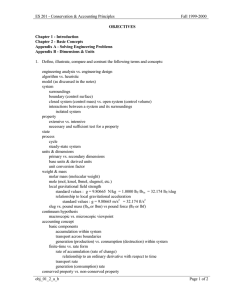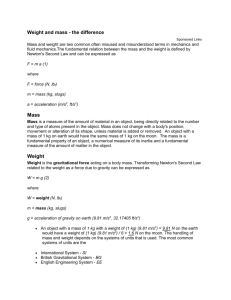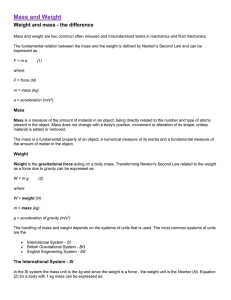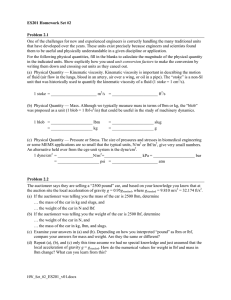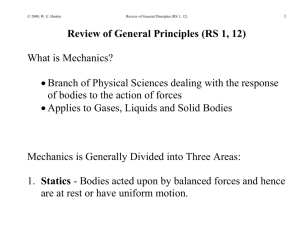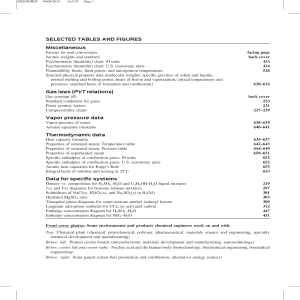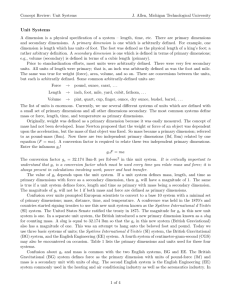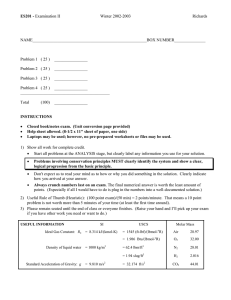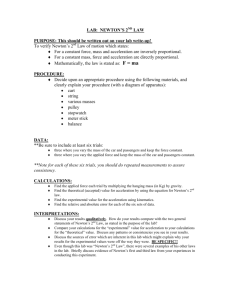LECT 2 - Unit Systems, Chemistry & Physics Concepts
advertisement
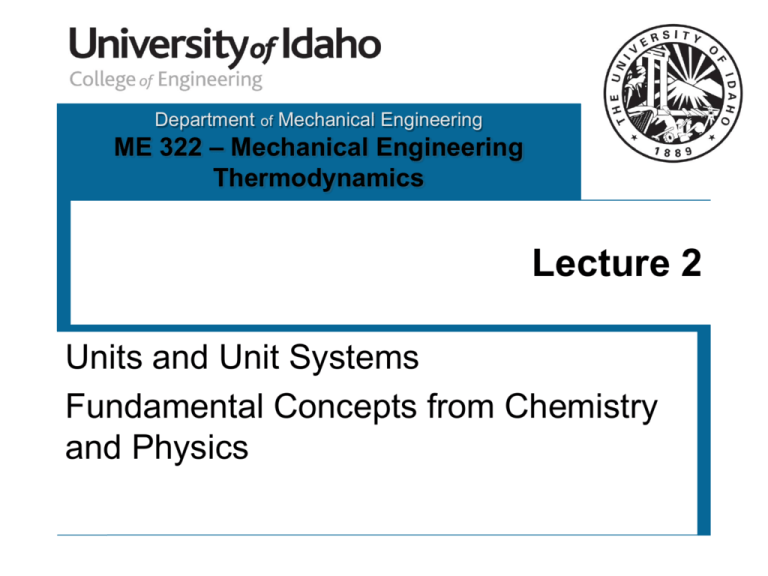
Department of Mechanical Engineering ME 322 – Mechanical Engineering Thermodynamics Lecture 2 Units and Unit Systems Fundamental Concepts from Chemistry and Physics Conventional Unit Systems Dimension Mass, M (derived) Mass, M (fundamental) Force, F (derived) Force, F (fundamental) MKS SI Engineering English Absolute English CGS Absolute kg lbm (lb) lbm gram (g) poundal (pd) dyne (d) slug (sg) N lbf lbf Length, L ft m ft ft cm Time, t s s s s s R K R R °K °F °C °F °F °C 1 1 1 1 Temperature, T (absolute) Temperature, T (relative) Conversion factor, gc 2 Technical English 32.174 lbm - ft lbf - s2 Newton’s Second Law of Motion Fundamental and derived dimensions for force and mass result from Newton’s Second Law of Motion, F ma This expression can be rewritten as an equality by introducing a proportionality constant, ma F gc The proportionality constant is 1/gc. The value of gc is given in the previous table for the various unit systems. 3 Newton’s Second Law of Motion In the SI system, mass is fundamental and force is derived. The derived dimension for force is, ma m kg-m F kg 2 2 N gc s s Newton In the Technical English (British Gravitational) system, force is fundamental and mass is derived. The derived dimension for mass is, F lbf-s 2 m gc sg a ft 4 slug Newton’s Second Law of Motion In the Engineering English (IP) system, mass AND force are fundamental. What is the implication of this? Using Newton’s Second Law, let’s determine the force equivalent to a mass of one pound at sea level, F ma gc 1 lbm 32.174 ft 2 s 1 lbf lbm-ft 32.174 lbf-s 2 The mystery of gc is finally revealed! The magnitude of gc was selected so that 1 lbm = 1 lbf at sea level where the acceleration due to gravity is 32.174 ft/s2. The ‘crazy’ units of gc result from a unit system were both mass and force are fundamental units. 5 Concepts from Physics • Velocity (with constant acceleration) V(t) = Vo + a*t • Displacement (with constant acceleration) S(t) = So + Vo*t + ½*a*t2 6 Other Concepts from Physics • Kinetic energy of a mass – Rotational KE rot I 2 2 gc I mass moment of inertia – Translational KEtrans mV 2 2 gc • Potential energy of a mass PE 7 mgz gc Concepts from Chemistry Control Volume Q Fuel Heat Air Work W Exhaust 8 WHY Chemistry??? • Chemistry is required to determine the heat released during a combustion process – Chapter 15 • Chemistry is required to help determine the properties of mixtures – Chapter 12 • Important chemistry concepts – – – – 9 Working with moles instead of mass How to balance chemical reaction equations Working with mole fractions The Ideal Gas Law
